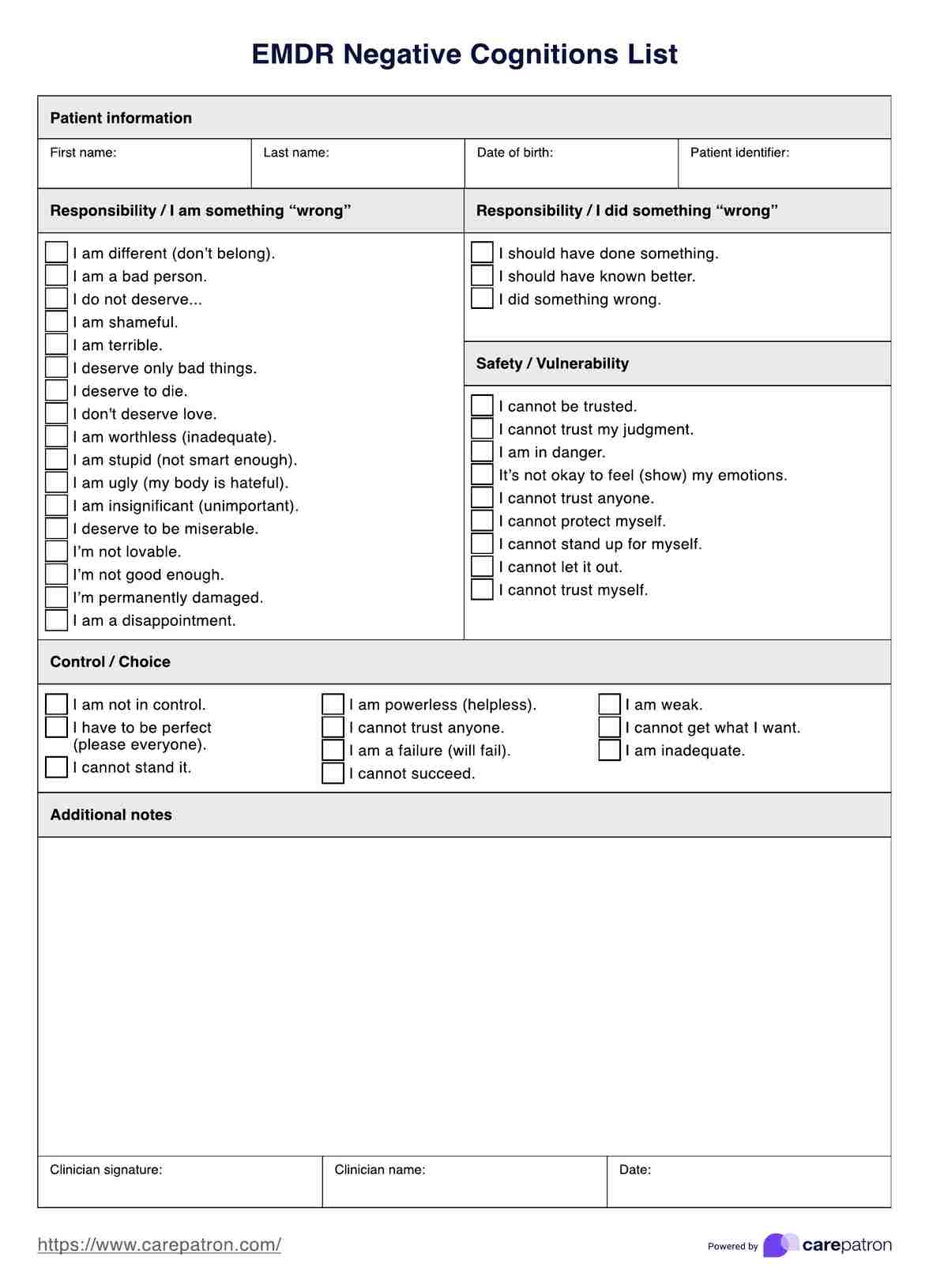An EMDR negative cognitions list should be used during the desensitization stage of EMDR therapy. It is used so patients can identify the negative beliefs they have associated with traumatic events, and these negative cognitions can be transformed into positive ones over time. The list is a great checklist for clients to reflect on their inner thoughts and feelings, and in accordance with clinically accepted instruments.

EMDR Negative Cognitions List
Download our EMDR negative cognition list to support your EDMR practices in evaluating and treating clients with PTSD. Gain greater insight into your client's state of mind, and integrate the list within the desensitization stage to work towards reshaping and molding positive associations.
EMDR Negative Cognitions List Template
Commonly asked questions
Fortunately, you don't need to write any components of an EMDR negative cognition list. All of the cognitions are listed for you, and the patient simply has to check which ones apply to them. There is also a space for them to provide additional notes, however, this is driven by the client and you do not need to write any component.
The EMDR negative cognition list is completed by the client. Typically, mental health practitioners will introduce the list during a session and go through it with their client, which may involve checking off cognitions for them, however, it is essentially the client who indirectly or directly fills out the checklist.
EHR and practice management software
Get started for free
*No credit card required
Free
$0/usd
Unlimited clients
Telehealth
1GB of storage
Client portal text
Automated billing and online payments











